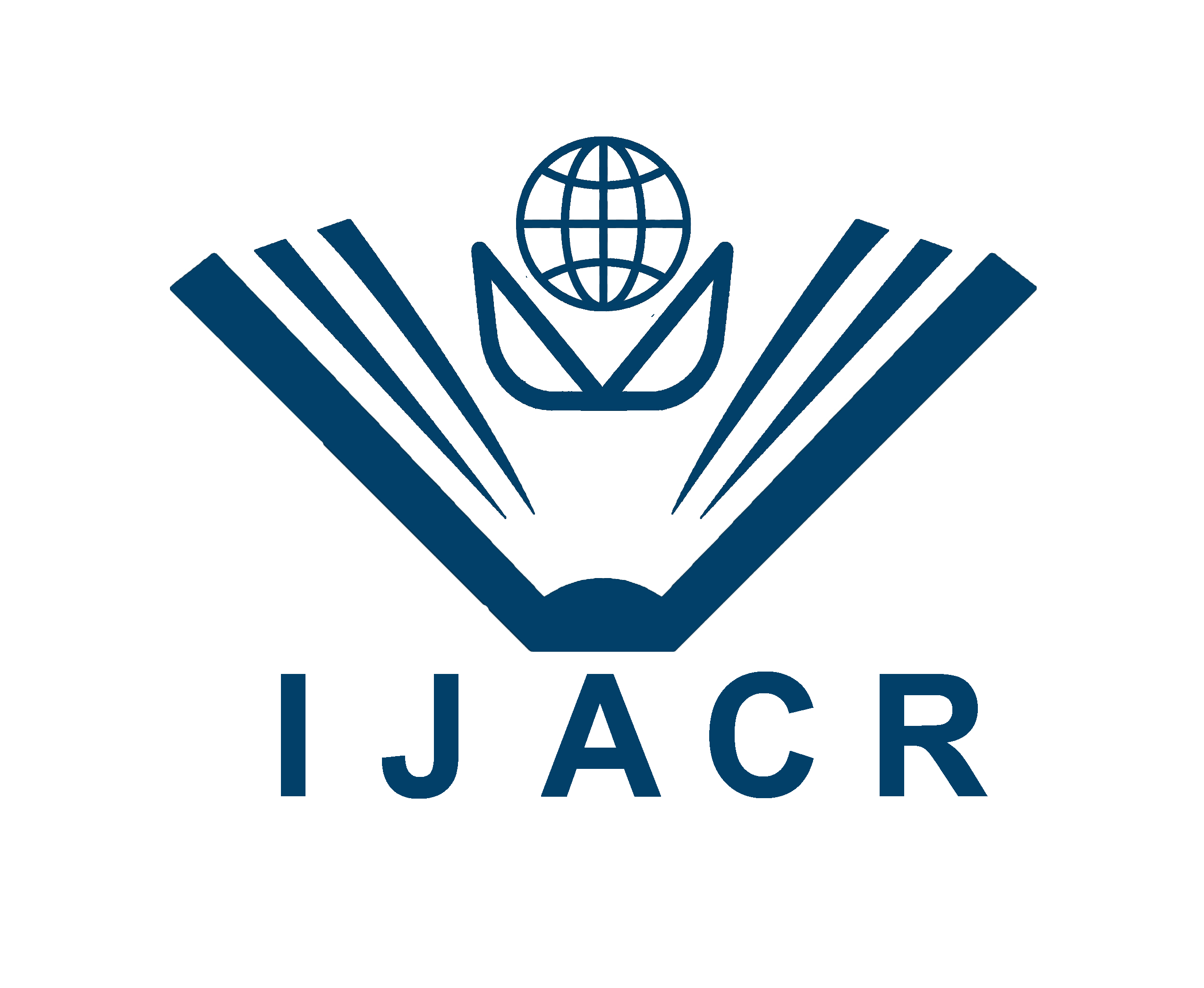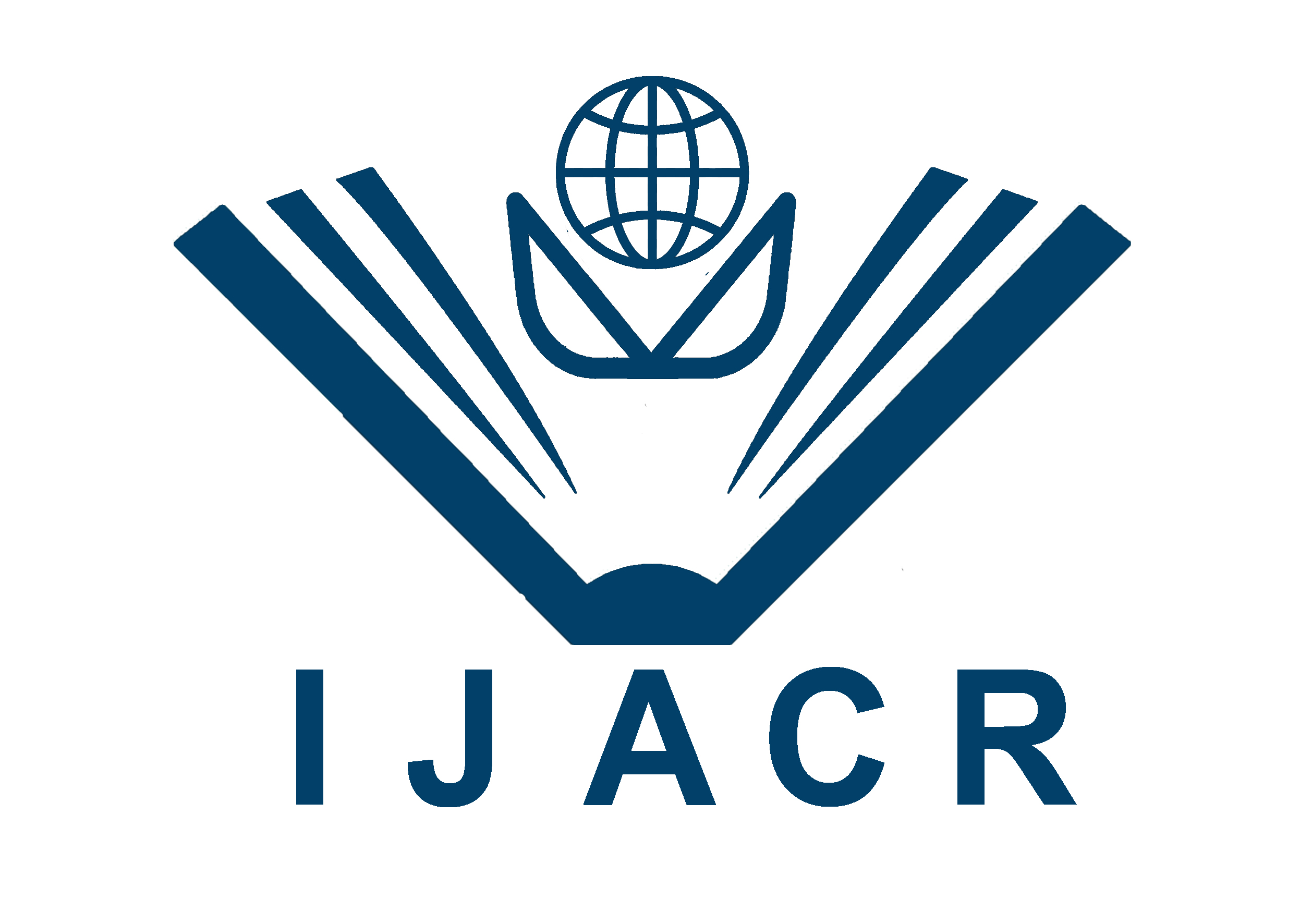International Journal for Asian Contemporary Research, 5(1): 7-12
Integrated Effect of Soil Solarization and Biofumigants on Soil-Borne Pathogens in Tomato
Received: 18 March, 2025 || Accepted: 20 April, 2025 || Published: 30 April 2025
A B S T R A C T
An experiment was conducted to evaluate the integrated effect of soil solarization and biofumigation on root-rot and root-knot diseases of tomato caused by Sclerotium rolfsii and Meloidogyne incognita. In vitro screening of mustard and marigold leaf extracts identified mustard as the most effective biofumigant, inhibiting radial growth (76.33%) and sclerotia formation (79.60%) of S. rolfsii. Selected biofumigant plants (mustard and marigold) were cultivated, chopped, and incorporated into the soil. The susceptible tomato variety ‘Moneymaker’ was used in field trials, where treatments included soil solarization and biofumigation alone or in combination. Among treatments, the combined application (T4) significantly reduced pre- and post-emergence seedling mortality, with the lowest disease incidence (25.37%) and severity (27.76%). Root-knot nematode severity was also lowest in solarized mustard-amended soil (4.37), followed by solarized marigold-amended soil (5.28). Egg mass production and galling index were considerably reduced under combined treatments. These results indicate that integrating soil solarization with biofumigation provides superior control of S. rolfsii and M. incognita compared to individual treatments.
Keywords: Solarization, Biofumigation, Sclerotium rolfsii, Meloidogyne incognita, Mustard and Marigold.
Copyright information: Copyright © 2025 Author(s) retain the copyright of this article. This work is licensed under a Creative Commons Attribution 4.0 International License
To cite this article: Fatema, K., Sultana, S., Raihan, A.R., Akter, S., Sultana, J.N. and Mahmud, M.R. (2025Integrated Effect of Soil Solarization and Biofumigants on Soil-Borne Pathogens in Tomato. International Journal for Asian Contemporary Research, 5(1): 7-12.
References
- Abdel-Rahim, M. F., Satour, M. M., Mickail, K. Y., El-Eraki, S. A., Grinstein, A., Chen, Y., & Katan, J. (1988). Effectiveness of soil solarization in furrow-irrigated Egyptian soils. Plant Disease, 72, 143–146.
- Adandonon, A., Aveling, T. A. S., Labuschagne, N., & Tamo, M. (2006). Biocontrol agents in combination with Moringa oleifera extract for integrated control of Sclerotium-caused cowpea damping-off and stem rot. European Journal of Plant Pathology, 4, 409–418.
- Angus JF, Gardner PA, Kirkegaard JA, Desmarchelier JM (1994). Biofumigation: isothiocyanates released from Brassica roots inhibit growth of the take-all fungus. Plant and soil.;162:107-12
- Astrom, M. (1998). Partial rupture in chronic Achilles tendinopathy: a retrospective analysis of 342 cases. Acta Orthopaedica Scandinavica.; 69(4):404-7.
- Baermann, G. (1917). A simple method for the detection of Ankylostomum (nematode) larvae in soil tests. 41-47.
- Barnett, H. L., & Hunter, B. B. (1972). Illustrated genera of imperfect fungi.
- Baysal-Gurel F, Gardener BM, Miller SA (2012). Soil Borne Disease Management in Organic Vegetable Production. Organic Agri.
- Baysal-Gurel, F., & Kabir, N. (2018). Comparative performance of fungicides and biocontrol products in suppression of Rhizoctonia root rot in viburnum. J. Plant Pathol. Microbiol, 9(9).
- Baysal-Gurel, F., Kabir, M. N., & Liyanapathiranage, P. (2019). Effect of organic inputs and solarization for the suppression of Rhizoctonia solani in woody ornamental plant production. Plants, 8(5), 138.
- Begum, F., & Bhuiyan, M. K. A. (2006). Integrated control of seedling mortality of lentil caused by Sclerotium rolfsii. Bangladesh Journal of Plant Pathology, 23, 13–24.
- Bennett RS, Spurgeon DW, DeTar WR, Gerik JS, Hutmacher RB, Hanson BD (2011). Efficacy of four soil treatments against Fusarium oxysporum f. sp. vasinfectum race 4 on cotton. Plant disease.; 95(8):967-76.
- Bhuiyan, K. A., & Sen, B. C. (2013). Integrated management of southern blight disease of carrot caused by Sclerotium rolfsii. Acta Phytopathologica Sinica, 43, 515 P.
- De Moura, M. R., Mattoso, L. H., & Zucolotto, V. (2012). Development of cellulose-based bactericidal nanocomposites containing silver nanoparticles and their use as active food packaging. Journal of Food Engineering, 109(3), 520-524.
- Fahey, J. W., Zalcmann, A. T., & Talalay, P. (2001). The chemical diversity and distribution of glucosinolates and isothiocyanates among plants. Phytochemistry, 56, 5–51.
- Gomez, K. A., & Gomez, A. A. (1984). Statistical procedures for agricultural research. John wiley & sons.
- Holbrook, T., & Ochsenbeib, C. (1983). Complete coverage of the denuded root surface with a one-stage gingival graft. International Journal of Periodontics & Restorative Dentistry, 3(3).
- Katan J, DeVay JE (1991). Soil solarization: historical perspectives, principles, and uses. Soil solarization. 24;2.
- Nene, Y. L., & Thapliyal, P. N. (1979). Fungicides in plant disease control.
- Raaijmakers JM, Paulitz TC, Steinberg C, Alabouvette C, Moënne-Loccoz Y (2018). The rhizosphere: a playground and battlefield for soilborne pathogens and beneficial microorganisms of Rhizoctonia root rot in viburnum. J. Plant Pathol. Microbiol.; 9(9).
- Rahman, T., Hosen, I., Islam, M. T., & Shekhar, H. U. (2012). Oxidative stress and human health. Advances in bioscience and biotechnology, 3(7), 997-1019.
- Sarwar, M., J. A. Kirkegaard, P. T. W. (1998). Wong, and JMm Desmarchelier. "Biofumigation potential of brassicas." Plant and Soil 201: 103-112.
- Shaban, A. (2011). Analyzing climatic and hydrologic trends in Lebanon. Journal of Environmental Science and Engineering, 5(4).
- Stapleton JJ (2000). Soil solarization in various agricultural production systems. Crop protection. 12; 19(8-10):837-41.
- Sundar, S., Rosenkaimer, F., Lesser, M. L., & Murray, H. W. (1995). Immunochemotherapy for a systemic intracellular infection: accelerated response using interferon-γ in visceral leishmaniasis. Journal of Infectious Diseases, 171(4), 992-996
Article View: 3089 times



